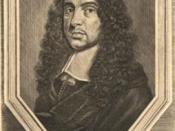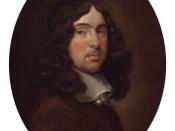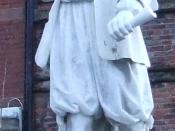"To His Coy Mistress" is primarily the author, Andrew Marvell, trying to convince and seduce "his coy mistress", into having intimate relations with him. The poem has three stanzas; each with a different purpose: the first stanza gently and subtly flatters his mistress, using positive diction and images to show, how Marvell wishes he could love her for all of eternity; the second stanza, however, uses imagery to show how time is moving fast and also, strongly negative diction and images to show how life must be lived happily, for there is no chance to after death; the last stanza, the conclusion of the poem, uses quite sexual images to tell his mistress, that because time is limited, they should make the most of it, and enjoy life's intimate pleasures together. Imagery and diction have been used effectively throughout the poem, to achieve the author's purpose, of seducing this lady.
The author also conveys a theme throughout the poem; life is short, your time on earth is limited, and therefore we must make the most of life's pleasures while we still can.
In the first stanza, imagery and diction, flatters this lady, Andrew Marvell wishes to seduce, and depicts his great and ever-growing love for her.
Marvell begins by describing how ideally he would have "world enough and time" to love this lady. They would "sit down, and think which way to walk and pass [their] long love's day." Imagery shows them taking their love very slowly. This image is created by diction with relaxed and slow connotations, such as "sit down", and "walk." The diction within that line, also creates alliteration, "which way to walk", and also, "long love's day;" this alliteration, and the long vowel sounds in "way", "walk", and "long", creates a slow and steady...


